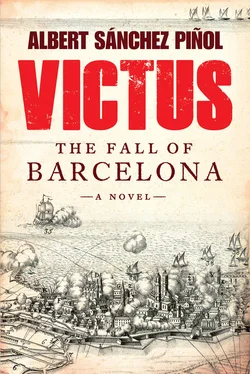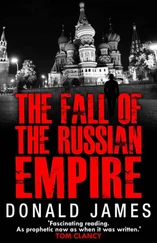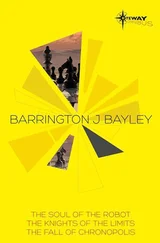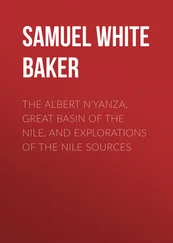The trench a little way advanced, we ran into some monumental rocks under the surface. It was almost as though some had been placed there by the enemy expressly to obstruct the trench. For the largest ones, we had to resort to explosives. But the blasting would also take out a large section of the trench, including the fajina parapets protecting us from enemy fire, which would then have to be reformed. And to think my superiors had laughed off a geological survey!
It was also in Tortosa that I had confirmation of another of Vauban’s teachings, one he’d told me about in person: Sappers are heavy drinkers; they become drunk before going and getting themselves killed. The front end of the trench moves forward by dint of the work of a small crew — eight or, at most, ten men. However grandiose the overall works, that is the most that can fit into the confines of a trench. The enemy knows this very well and concentrates fire on just that point.
Sappers suffer a disproportionately high number of casualties and deaths. However well they are paid, and though the crews are relieved every three or four hours, the tension will end up destroying their nerves. In order to bear it, they drink, and drink, then they drink some more.
For a young engineer such as myself, Tortosa brought home the gap between lessons and reality. Take the Mantelletta, for instance. If you look at any images of a siege, beside a sapper there will always be a barrow, a contraption with two wheels and a panel of wood. The sapper farthest forward uses this as a shield. Fine, well, you can forget about that — I can assure you the nitwit who drew those pictures has never been present at a siege in all his life. I can remember only one siege where a Mantelletta was used, and that was because some recently graduated dunderhead forced the sappers to take it. Sapper crews hated the Mantelletta — why? Because they enrage the enemy, who sees the head of the dragon and proceeds to rain down upon it all the fire they can.
But of all the gaps between theory and practice, perhaps the most surprising was something no one had referred to during my studies: the raft of people voluntarily inserting themselves into the battle situation.
In Vauban’s world, the spheres of civic and martial life were at once overlapping and separate. But the last thing I expected was, as the Attack Trench became a complex web of passageways and surface-level crypts, that it would also be invaded by civilians. Milling around as though the parallels were city boulevards, and the lines of communication streets and alleyways.
Naturally, as the trenches drew closer to the ramparts, and the enemy fire grew fiercer, you would see fewer and fewer non-troops. But even where the vanguard was most exposed, dozens of people who had no clear place there would be swarming around. Priests above all. Everyone with something to sell; the whores offering a quickie up against some outjutting trench corner, lying there with their legs akimbo, cunt in the air, lifting their skirt whenever anyone came by; peddlers offering morsels to eat, a break from the usual insipid gruel. The range of professions that descended into the trenches was nigh on infinite. Shoemakers, professional gamblers, barbers, people to delouse your clothing, cobblers, gypsies, prostitutes of all varieties, anything and everything. Bear in mind that Vauban never would have tolerated such a sorry spectacle — but Vauban had the kind of clout you don’t see very often. And Orléans was a Coehoornian who had little time for the idea of a siege being comprised of different facets. I think he initiated that trench only to give his cousin Monsieur Forgotten a chance to take the credit back at Versailles.
It was quite a lesson to me, seeing the way man exploits and usurps undergroun realms. And there in the trench at Tortosa, I met two creatures who caused me profound dismay, the closest thing imaginable to creatures from the underworld.
The child can have been no older than six or seven years. Even an animal would clothe itself in a more dignified way. Barefoot, and with tattered pantaloons that went down only as far as his knees, and a vest that might have been white once but was covered in gray from ash and adventures. And his hair, mother of God, his hair: So much grime and muck had accumulated in it that his sandy locks had turned into rough, ratty clumps. And then, dependent on this child, another being out of fable: a dwarf clothed in the attire of a traveling fairground. His face was squashed together, as though he were suffering some form of mental constipation, not uncommon among his kind. But his compulsive grimacing suggested he was unhinged in some way. Most extraordinary of all was the funnel crowning the dwarf’s head — a large round piece of metal, its pointed spout pointing proudly up. You couldn’t be sure whether the funnel suited the dwarf or vice versa. Both child and dwarf were the same height.
I will always remember the first words I said to the lad. I took him by the scruff of the neck and asked: “You? Where’s your father?”
Father? He looked at me as though I’d said something in Chinese. His Catalan was mixed together with a little Castilian Spanish and much French. As for the dwarf, his chosen form of communication was the grunt. The child was called Anfán, the dwarf Nan; their life stories were contained in these names. Anfán was no more than a spoken transcription of the French word for “child,” enfant . I assumed therefore that his life until then had been spent in French military encampments, where the men simply called this wayward little creature enfant . And “Nan” is simply Catalan for “dwarf.” Doubtless Anfán was an orphan with nowhere else to go. Catalonia had been in an almost perpetual state of war for decades. His parents having died of natural causes — or at the hands of some murderer — Anfán, like so many, fell by the wayside. As for the dwarf, his name represented a summary of his life as much as the mystery of it. How had he got there, and where from? No one would ever know. Neither his language, nor his mind, both deficient, would ever be able to express it. One thing was certain: The child loved the dwarf unreservedly, fiercely, absolutely. As he scurried around the trenches, Anfán was always sure to protect the dwarf and provide him with shelter, and on one occasion, when they lost each other, the boy rushed around in sheer desperation. He looked for Nan night and day, and when they were reunited, an outbreak of joyful weeping was heard all around.
I came across them one night, sleeping totally unprotected in their little den: a hole in the ground alongside the first parallel, full of a great number of empty munitions boxes as large as coffins. Seeing some shadows, I entered. And there they were. For a bed, some old rush matting hidden at the back of the rat hole, in among all the detritus. They slept hugging each other, far from the din of fighting without.
Anfán, mewling sweetly, held a protective arm across the dwarf’s chest. I got ready to give them the fright of their life — but something stopped me at the last moment: Anfán’s unshod feet. I held one of them lightly in my hand. I examined it with the same attention I had applied in the Spherical Room. The scars all over the soles spoke of the harshness of the life he’d led. I was overcome by emotion, something an engineer should always guard against. I did not want to grow attached to this sorry pair, but neither did I feel it in me to trouble them.
There is something sacrosanct in the breathing of sleeping children, as though a sign by nature to say that anyone who harmed them would never be forgiven. I laid a sheet of munition wadding over them, that was all, and left.
We were yet to get as far as the third parallel. The majority of the civilian interlopers didn’t go any farther than the first. Even the greediest trader didn’t usually go as far as the second, at which point the enemy projectiles fell more accurately; light weapons were in range, too.
Читать дальше












